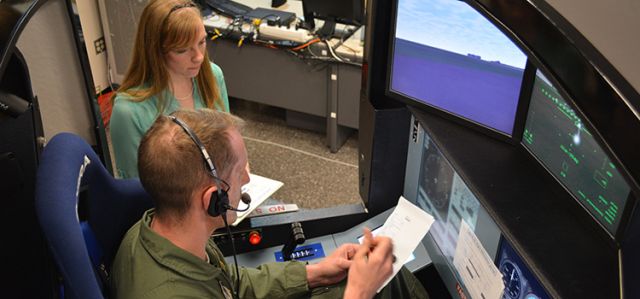A Jet Fuel Surrogate Formulated by Real Fuel Properties
Document Type
Article
Publication Date
12-2010
Publication Source
Combustion and Flame
Abstract
An implicit methodology based on chemical group theory to formulate a jet aviation fuel surrogate by the measurements of several combustion related fuel properties is tested. The empirical formula and derived cetane number of an actual aviation fuel, POSF 4658, have been determined. A three component surrogate fuel for POSF 4658 has been formulated by constraining a mixture of n-decane, iso-octane and toluene to reproduce the hydrogen/carbon ratio and derived cetane number of the target fuel. The validity of the proposed surrogate is evaluated by experimental measurement of select combustion properties of POSF 4658, and the POSF 4658 surrogate.
- (1)
-
A variable pressure flow reactor has been used to chart the chemical reactivity of stoichiometric mixtures of POSF 4658/O2/N2 and POSF 4658 surrogate/O2/N2 at 12.5 atm and 500–1000 K, fixing the carbon content at 0.3% for both mixtures.
- (2)
-
The high temperature chemical reactivity and chemical kinetic–molecular diffusion coupling of POSF 4658 and POSF 4658 surrogate have been evaluated by measurement of the strained extinction limit of diffusion flames.
- (3)
-
The autoignition behavior of POSF 4658 and POSF 4658 surrogate has been measured with a shock tube at 674–1222 K and with a rapid compression machine at 645–714 K for stoichiometric mixtures of fuel in air at pressures close to 20 atm.
The flow reactor study shows that the character and extent of chemical reactivity of both fuels at low temperature (500–675 K) and high temperature (900 K+) are extremely similar. Slight differences in the transition from the end of the negative temperature coefficient regime to hot ignition are observed. The diffusion flame strained extinction limits of the fuels are observed to be indistinguishable when compared on a molar basis. Ignition delay measurements also show that POSF 4658 exhibits NTC behavior. Moreover, the ignition delays of both fuels are also extremely similar over the temperature range studied in both shock tube and rapid compression machine experiments. A chemical kinetic model is constructed and utilized to interpret the experimental observations and provides a rationale as to why the real fuel and surrogate fuel exhibit such similar reactivity.
Inclusive pages
2333-2339
ISBN/ISSN
0010-2180
Copyright
Copyright © 2010, Combustion Institute
Publisher
Elsevier
Volume
157
Issue
12
Peer Reviewed
yes
eCommons Citation
Dooley, Stephen; Won, Sang Hee; Chaos, Marcos; Heyne, Joshua S.; Ju, Yiguang; Dryer, Frederick L.; Kumar, Kamal; Sung, Chih-Jen; Wang, Haowei; Oehlschlaeger, Matthew A.; Santoro, Robert J.; and Litzinger, Thomas A., "A Jet Fuel Surrogate Formulated by Real Fuel Properties" (2010). Mechanical and Aerospace Engineering Faculty Publications. 229.
https://ecommons.udayton.edu/mee_fac_pub/229
COinS




Comments
© 2010. This manuscript version is made available under the CC-BY-NC-ND 4.0 license http://creativecommons.org/licenses/by-nc-nd/4.0/.
Permission documentation on file.